#European Greenfinch
Explore tagged Tumblr posts
Text








The last eight, watercolours 12x9 cm
...
De senaste åtta, akvareller, 12x9 cm
#skog#natur#sjö#grönfink#kråka#turkduva#gräsand#akvarell#konst#forest#nature#lake#european greenfinch#hooded crow#eurasian collared dove#mallard#watercolour#watercolor#art#watercolor art#watercolor painting#aquarelle#acuarela#aquarela#acquerello#suluboya#akwarela#акварель#水彩#peace
135 notes
·
View notes
Text





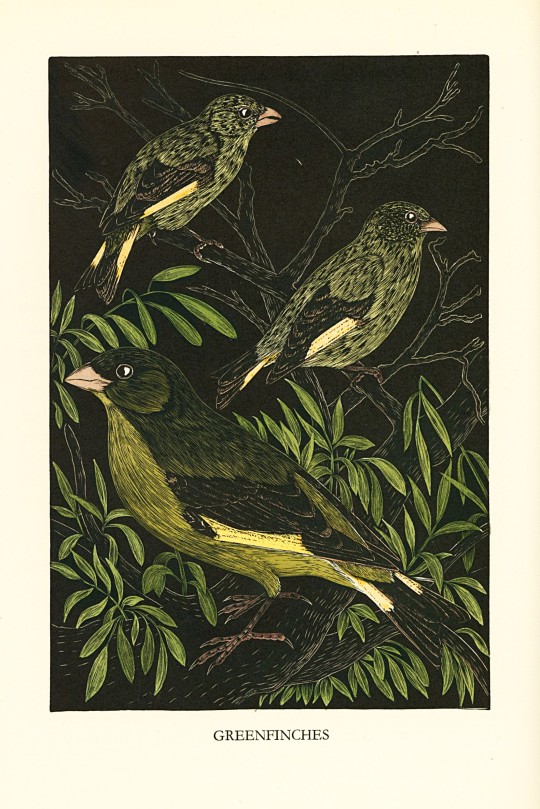


Feathursday Finches
Here are some birds from the family Fringillidae, illustrated in black-and-white and hand-colored wood engravings by British author and wood engraver Eric Fitch Daglish (1892-1966) from his 1948 publication Birds of the British Isles, published in London by J. M. Dent & Sons in 1948 in a limited edition of 1500 copies. From top to bottom:
Eurasian Bullfinch (Pyrrhula pyrrhula)
Twite (Linaria flavirostris)
Brambling (Fringilla montifringilla)
Eurasian Chaffinch (Fringilla coelebs)
Red Crossbill or Common Crossbill (Loxia curvirostra)
European Greenfinch (Chloris chloris)
Eurasian Siskin (Spinus spinus)
European Goldfinch (Carduelis carduelis)
Birds of the British Isles is a donation from our friend, Wisconsin wood engraver Tony Drehfal.
View more posts from this volume.
View more Feathursday posts.
#Feathursday#Birds of the British Isles#Eric Fitch Daglish#J. M. Dent & Sons#wood engravings#Eurasian Bullfinch#bullfinches#Twite#Brambling#Eurasian Chaffinch#chaffinches#Red Crossbill#Common Crossbill#crossbills#European Greenfinch#greenfinches#European Goldfinch#goldfinches#Eurasian Siskin#siskins#birds#birbs!
114 notes
·
View notes
Note
How about a European greenfinch (Chloris chloris)?
in honor of my neighbourhood population :)
Absolutely!


#european birds#north africa#southwest asia#introduced in australia#new zealand#uruguay#and argentina#european greenfinch#greenfinch#finch#wild birds#passeriformes#fringillidae#cardualinae#animal polls#poll blog#my polls#animals#polls#tumblr polls#bird
30 notes
·
View notes
Text


He literally posed for me <3
#the sweet boy from my earlier post#european greenfinch#chloris chloris#birblr#birds#birdblr#birdwatching#animals#bird photography#birding#birds of tumblr#nature#mine
40 notes
·
View notes
Text

Posting birds until I hit post limit: European greenfinch
13 notes
·
View notes
Text
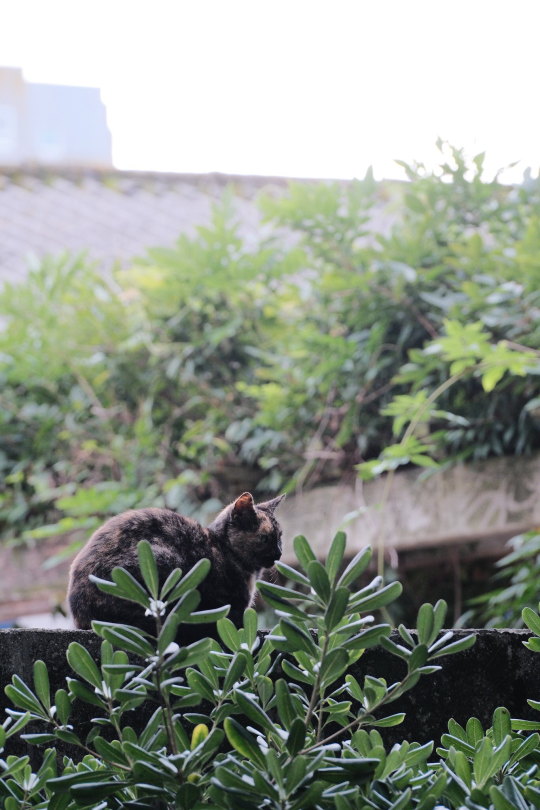
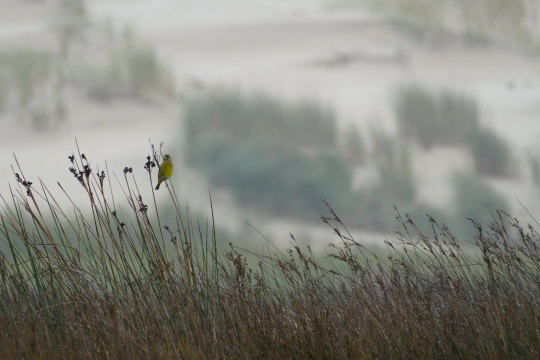

(1) (2) (3) by Pablo Mediavilla
Via Flickr:
(1) Hidden kitten. Fujifilm X-T5 con xf70-300mm en el parque de Santa Margarita. (2) Chloris chloris in Area Maior lake. (3) Ardea cinerea watching from the sand dune.
3 notes
·
View notes
Text
my european greenfinch photo collection is finally complete

0 notes
Photo

1 note
·
View note
Text




European Robin/rödhake, Greenfinch/grönfink, Great Spotted Woodpecker/större hackspett and Eurasian Nuthatch/nötväcka. Värmland, Sweden (September 11, 2022).
277 notes
·
View notes
Text
What's the Bird?
Location: Germany
Date: Summer

We ask that discussion under questions be limited to how you came to your conclusion, not what your conclusion was.
Happy Birding!
Keep the game alive! Submit a bird HERE
25 notes
·
View notes
Text


European Greenfinch (Chloris chloris)
South Park, Co. Galway - 09-11-2024
11 notes
·
View notes
Text
Bird time! As a certified Bird Nerd I loved all the references to bird species in this chapter so I figured I would show them off in case you want a visual in your mind.
To try to figure out exactly which species are mentioned (even though I know Hugo was not concerned with what genus and species he was referring to), I looked up the frequency of bird species seen in the Luxembourg Gardens in the first quarter of June on eBird! Granted, I have no idea how much avian diversity has changed in the city of Paris from the 1800s to now, but I don't know my European species very well so this was a huge help.
1. "fauvettes" / "linnets" According to wikipedia, "fauvette" is generally agreed to refer to the family Sylviidae , specifically the genus Sylvia, though it can refer to other passerine species. "Linnet," meanwhile, seems to refer to the family Fringillidæ (true finches). I'm going to go with the original French and say that these are what in English we would call "warblers" rather than finches. The only member of the genus Sylvia seen in the Luxembourg Gardens in early June on eBird is the Eurasian Blackcap (Sylvia atricapilla) (pictured). The other Sylvia species seen in the gardens but more rarely is the Garden Warbler (Sylvia borin).

2. "passereaux" / "sparrows" In ornithology, "passeraux" in English would be "passerines" which is the biggest order of birds, comprising about half of all bird species! However, the TLFi states that "passereau" can be a synonym for "moineau," or "sparrow." So I think Hapgood is correct in that translation and we can narrow down the species a bit. The only sparrow that is seen in the Luxembourg Gardens at any time of year is the House Sparrow (Passer domesticus).

3. "pique-bois" / "woodpeckers" Finally a straight-forward translation! According to eBird data, there are two species of woodpeckers seen in the Luxembourg Gardens. The only one seen at the correct time of year is the Eurasian Green Woodpecker (Picus viridis) (pictured), although the Lesser Spotted Woodpecker (Dryobates minor) has been seen just a little earlier in the year.
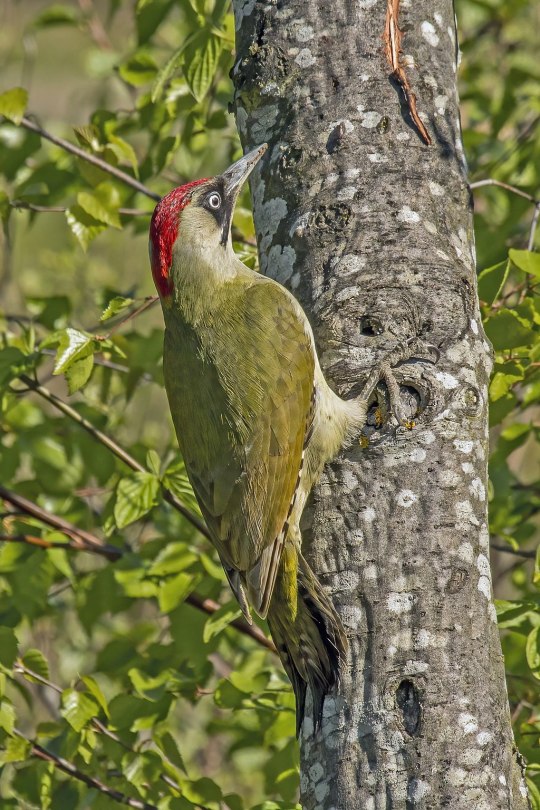
4. "les hirondelles" / "the swallows" A species I know quite a lot about! This is undoubtedly referring to the Barn Swallow (Hirundo rustica), which I had the privilege of studying for a few years to research their movement patterns. The line in the text is so wonderful and shows that Hugo has definitely watched these graceful birds before, as he captured the nature in which they glide and skim with speed near the ground, foraging for flying insects: “the swallows indulged in the charming threat of flying low.”

5. "le ramier" / "ring-dove" I believe this is pretty straight-forwardly referring to the Common Wood-Pigeon (Columba palumbus) which is the most commonly seen bird overall in the gardens in early June!

6. "le pinson" / "chaffinch" According to wikipedia, the term "pinson" is another common-name term given to multiple species of grain-eating passerines, however, there are two "true" pinson species, one of which is seen in the Luxembourg Gardens at this time: the Common Chaffinch (Fringilla coelebs).
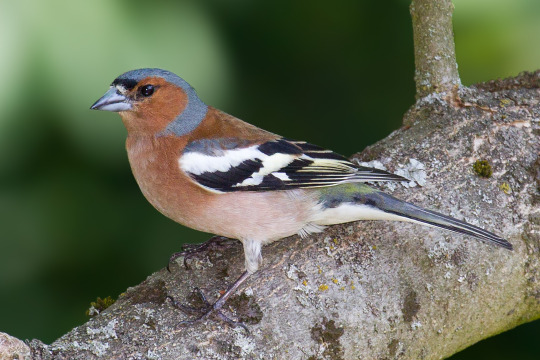
7. "le chardonneret" / "goldfinch" We're once again dealing with an ambiguous term here for birds in the family Fringillidae. Unfortunately, the birds that have "Chardonneret" in their common name do not appear on any eBird lists for the Luxembourg Gardens. The only other Fringillidae species that are recorded in the gardens (besides the Common Chaffinch) are the European Greenfinch (Chloris chloris) and the European Goldfinch (Carduelis carduelis). While neither have been seen in early June, the European Greenfinch is seen more commonly. However, I think this could be a toss up.

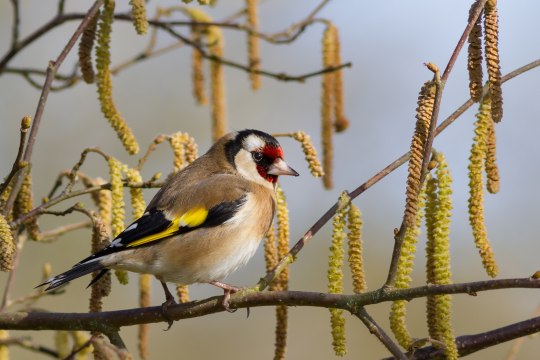
8. "le rouge-gorge" / "red-breast" This one is pretty straightforward, "le Rouge-gorge familier" is none other than the European Robin (Erithacus rubecula) (aka extreme borb).
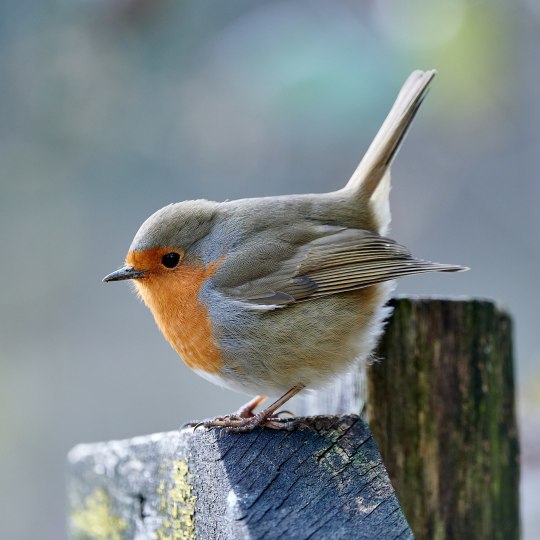
9. "le verdier" / "the green finch" We've already discussed all of the finches that have been documented in the Luxembourg Gardens, and since "verdier" refers to birds in the genus Chloris, this last bird mention is again talking about our friend the European Greenfinch (Chloris chloris).
After reading this chapter I thought Hugo was listing so many bird species... which he certainly did, but after poking around on eBird for what's been seen at the Luxembourg Gardens in the past I want to know why he focused so much on the finches and didn't mention any thrushes, swifts, tits, wrens, treecreepers, or so many more!
42 notes
·
View notes
Text
The Parable of the Mustard Seed (icon)
“Jesus put before them another parable: "The kingdom of heaven is like a mustard seed that someone took and sowed in his field; it is the smallest of seeds, but when it has grown it is the greatest of shrubs and becomes a tree, so that the birds of the air come and rest in its branches." -Matthew 13:31-32
Recent icon of this passage by Kelly Latimore:
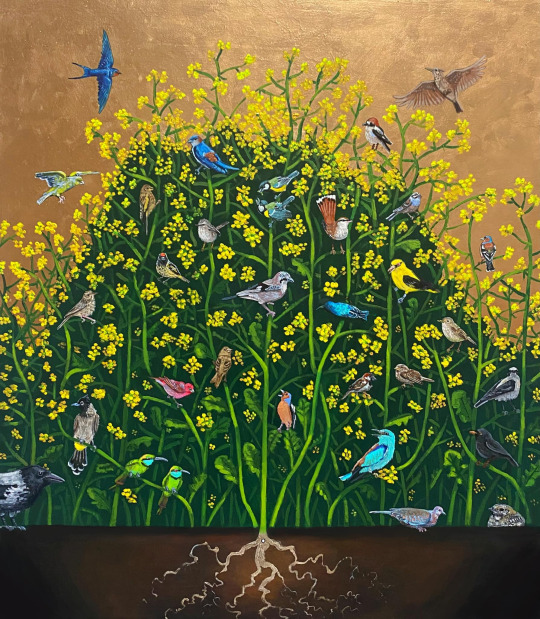
+++
Commenary by Kelly Latimore:
Jesus' parables are one of the ways Jesus trains his disciples. The parables, like the sermon on the mount, have always been crucial for the church to imagine the kind of community it is called to be. We discover again and again that Jesus' parables significance points to everyday life. The parables are meant to be lived.
The original audience may have been perplexed by this story. They would have known that no-one would intentionally plant a mustard shrub. In fact, the Jewish Mishnah forbade the growing of mustard seeds in the garden because they were 'useless annoying weeds'. In the Hebrew Scriptures the "birds of the air" can be a reference to Gentiles/Non-Jews, the foreigner.
This parable suggests that the kingdom of heaven is available to everyone. Even those who may be considered outsiders or not "Worthy". Jesus is calling us to see the significance in the insignificant. The parables of the kingdom of heaven make clear that the kingdom of heaven is not "up there". Through the parables Jesus is teaching us to "be for the world the material reality of the kingdom of heaven brought down to earth." As Jesus is himself the parable of the father so the church is meant to be the parable of Christ. A people in space and time welcoming the outcast, the foreigner, and the stranger. These kind of communities will look like unwanted weeds to the world, or even to other christians. However, this may be exactly the church Jesus is asking us to embody. Prints, Digital Downloads, and Calendars available All of the birds in this icon are native to the Holy Land. Birds in the icon: Palestine Sunbird, Scrub Warbler, Common Rosefinch, Laughing dove, Barn Swallow, House Sparrow, Fire-Fronted Serin, Red- Rumped Swallow, Rufous-tailed Scrub Robin, Woodchat Shrike, European Greenfinch, Tree Pipit, Nubian Nightjar, Northern Wheatear, Green Bee Eater, Eurasian Golden Oriole, European Roller, Eurasian Jay, Great Tit, Hooded Crow, Eurasian Blackbird, Common Chiffchaff, Rock Bunting, Crested Lark, and White Spectacled Bulbul. https://www.facebook.com/photo/?fbid=1006593093924270&set=a.437194030864182 https://www.facebook.com/kellylatimoreicons
33 notes
·
View notes
Text
European greenfinch (Chloris chloris) photos I took on Sunday 08/10/2023, Wintersett, West Yorkshire, UK





#nature#nature photography#animal#animals#wildlife#animal photography#wildlife photography#british nature#wild#wild animals#greenfinch#finches#finch#fringillidae#passeriformes#passerine#bird#birds#bird photography#birdwatching#birding#ornithology#aves#avian#wild animal#british wildlife#british birds#green#beautiful#pretty
23 notes
·
View notes
Photo

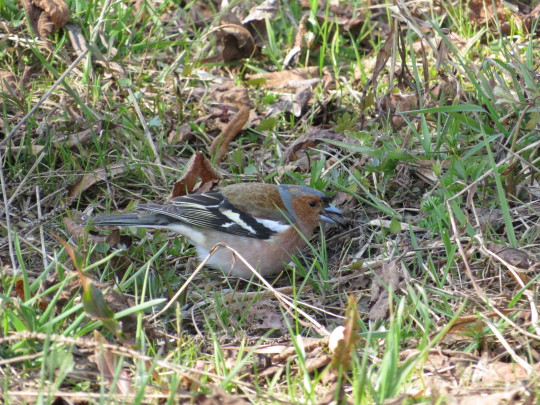

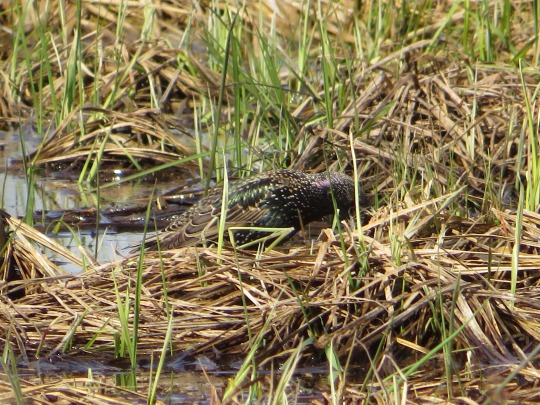


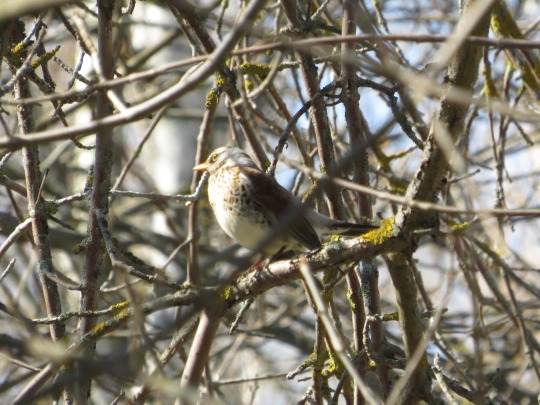
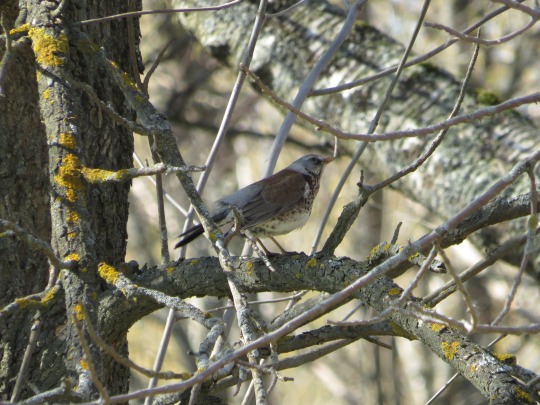


Amateur birdwatching in April. 1-2) Finches, male and female. 3) European greenfinch. 4-5) Starlings. 6) Wood warbler (Phylloscopus sibilatrix) . 7-11) Fieldfare (Turdus pilaris)
27 notes
·
View notes
Text
another bird I really like (this time one we get in our garden) is the Grünfink [european greenfinch]!


[ID: Two pictures of greenfinches. The first one is sitting on a twig, it's a brighter green, while the second one is sitting in the snow and more of a browner green. End ID]
5 notes
·
View notes